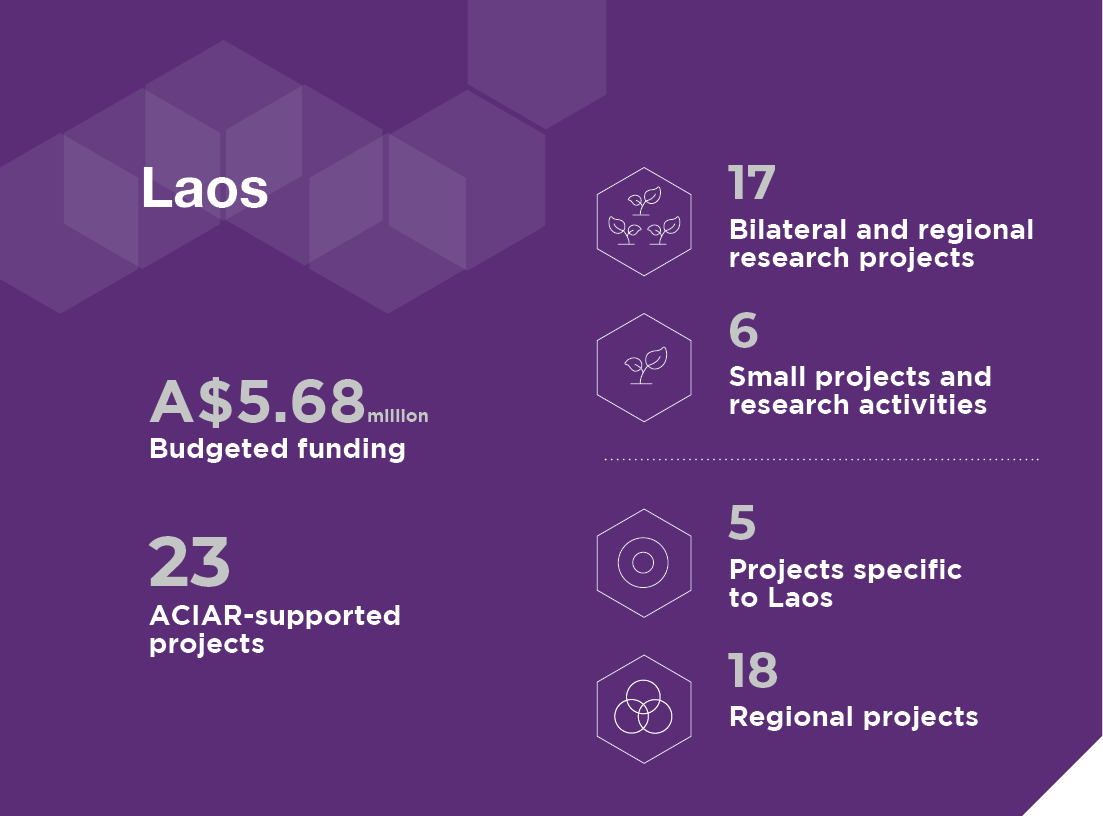Like many countries in the world, Laos struggled with the impacts of the COVID-19 pandemic, which disrupted livelihoods and tested its fragile healthcare system. Economically, Laos had its slowest GDP growth rate in 30 years because of the pandemic.
Signs of an economic recovery in early 2022 were welcomed, with economic activity mostly driven by the services sector (due to increased regional and domestic tourism) and the openings of the Laos–China railway and the Thanaleng Dry Port. However, the Laos kip depreciated against the US dollar (to 68%), weakening economic recovery, and public debt increased to 69% of GDP. Consumer price inflation rose to 37% while food price inflation reached 39%. As a result, the economic growth forecast for 2022 was revised down to 2.5% from 3.8%.
Although agriculture continues to play a significant role in the Lao economy, the sector’s share of GDP has decreased from 51% in 2000 to 16.5% in 2020. Subsistence agriculture is still the primary economic activity of approximately 61% of the national labour force (World Bank, 2021). The latest agriculture census nationwide (2019–20) indicates that smallholder farmers account for 52% of total agricultural households, the majority of whom are poor and face a wide range of supply-side challenges that affect productivity and market participation.
Most agricultural products are produced for domestic consumption, not for export. Despite its recent rapid growth and policy support, development of the export sector is constrained by many challenges. In 2022, cassava, banana and rubber performed well but livestock declined.
In a brief to the Lao PDR Government (in September 2022), the FAO indicated that Laos is facing the risk of food insecurity by 2023. Increased prices of fuel, fertiliser and feed in 2022 meant that Lao farmers cut back on planting crops during the wet season, resulting in a drop in agricultural production and household incomes. While the full impacts are yet to be felt, expectations are that many poor rural households will adopt coping strategies, which include reducing food intake.
The Lao PDR Government’s vision is to move the country from an isolated nation to one that is linked to the East Asia region through infrastructure that fosters trade and integration. To this end, it has made significant investments to improve regional connectivity. The northern corridors connect with China, the western corridors connect with Thailand, and the eastern corridors connect with Vietnam.
The government remains committed to transforming its agrifood system to be more sustainable and modernised, contributing to the national economic base with a strong focus on support for smallholder farmers. The Agricultural Development Strategy provides the framework, vision and long-term development goal for ensuring national food security and sustainable development of the agriculture, forestry and natural resources sector. The Ministry of Agriculture and Forestry has the Agricultural Development Plan 2021–2025, which focuses on improving food security and encourages commercial agriculture for domestic and export purposes, increasing agricultural productivity, providing employment opportunities in rural areas, and improving production systems and practices.
Country priorities
In 2023–24, ACIAR will recalibrate its long-term strategic program priorities based on consultation with Lao stakeholders. The strategic priority outcomes that currently guide our investments in Laos are:
- efficient and sustainable forestry industries, including non-timber products, with suitable climate-change resilience
- innovative livestock systems that allow for intensification and land-use requirements, while raising animal health and biosecurity levels
- increased fish habitat restoration and protection of fish migration routes
- cost-effective and sustainable rice-based farming systems, through mechanisation, diversification and intensification, along with better crop quality, quarantine standards and value-adding for domestic and export markets
- improved natural resource management that benefits livelihoods and food security by delivering land-use options to smallholders, with attention to both water and nutrient management within climate-change adaptation
- improved institutional training and communication frameworks that enable smallholders to adopt and adapt new technologies, and increase the capacity development of researchers and educators.
2023–24 research program
The research program addresses our high-level objectives, as outlined in the ACIAR 10-Year Strategy 2018–2027, as well as specific issues and opportunities identified by ACIAR and our partner organisations.
The following table lists ACIAR-supported projects active in Laos during 2023–24.
Current and proposed projects in Laos, 2023–24

